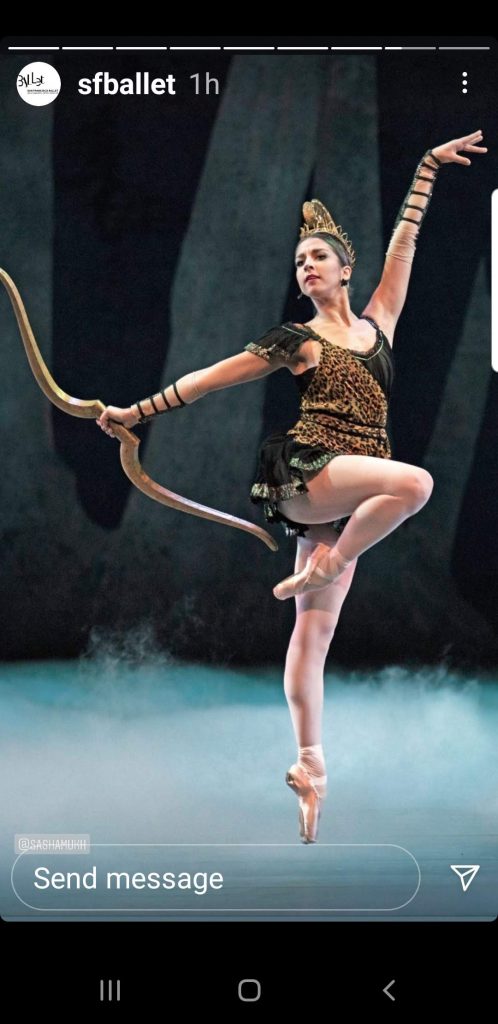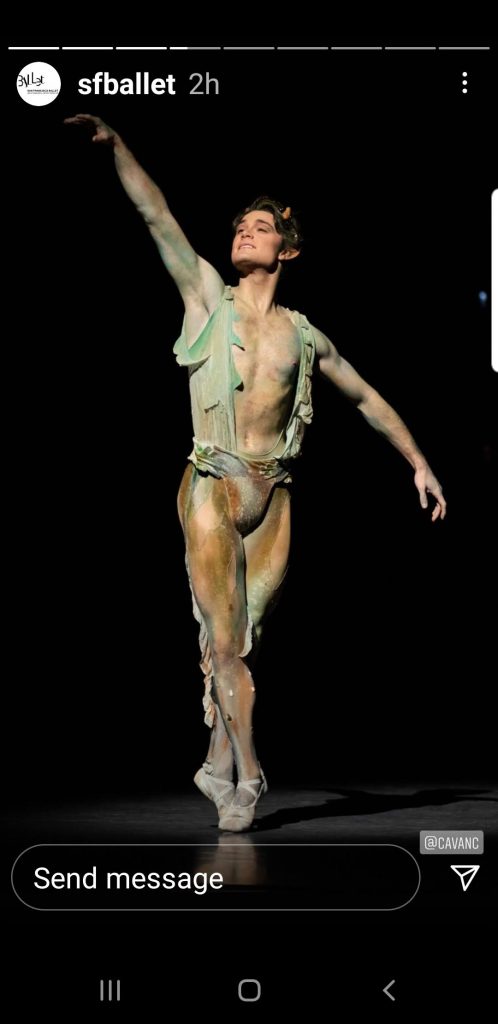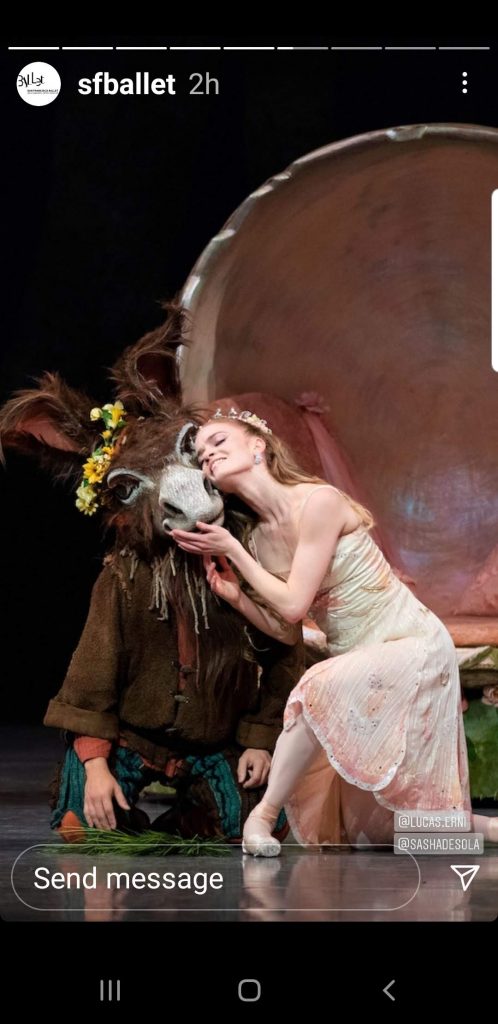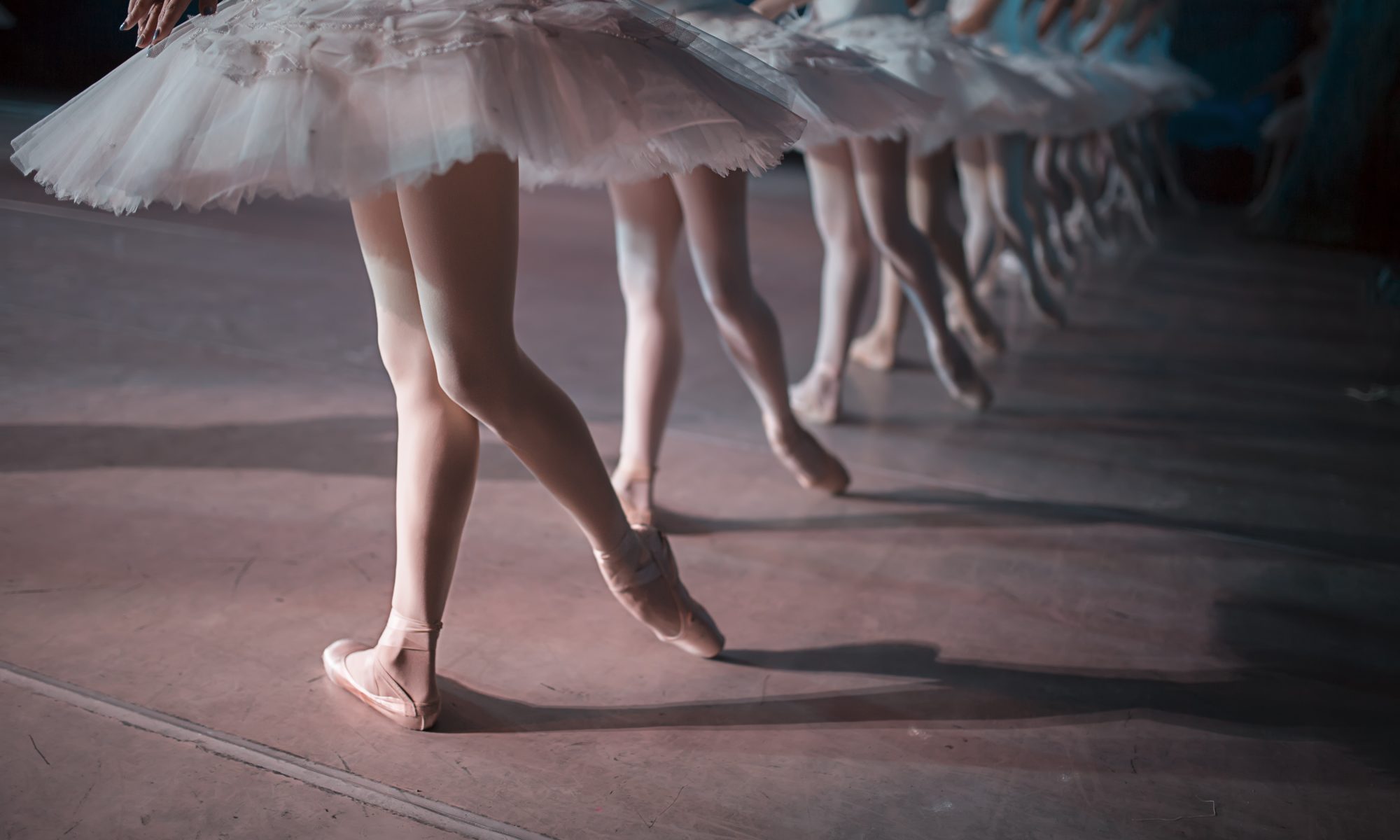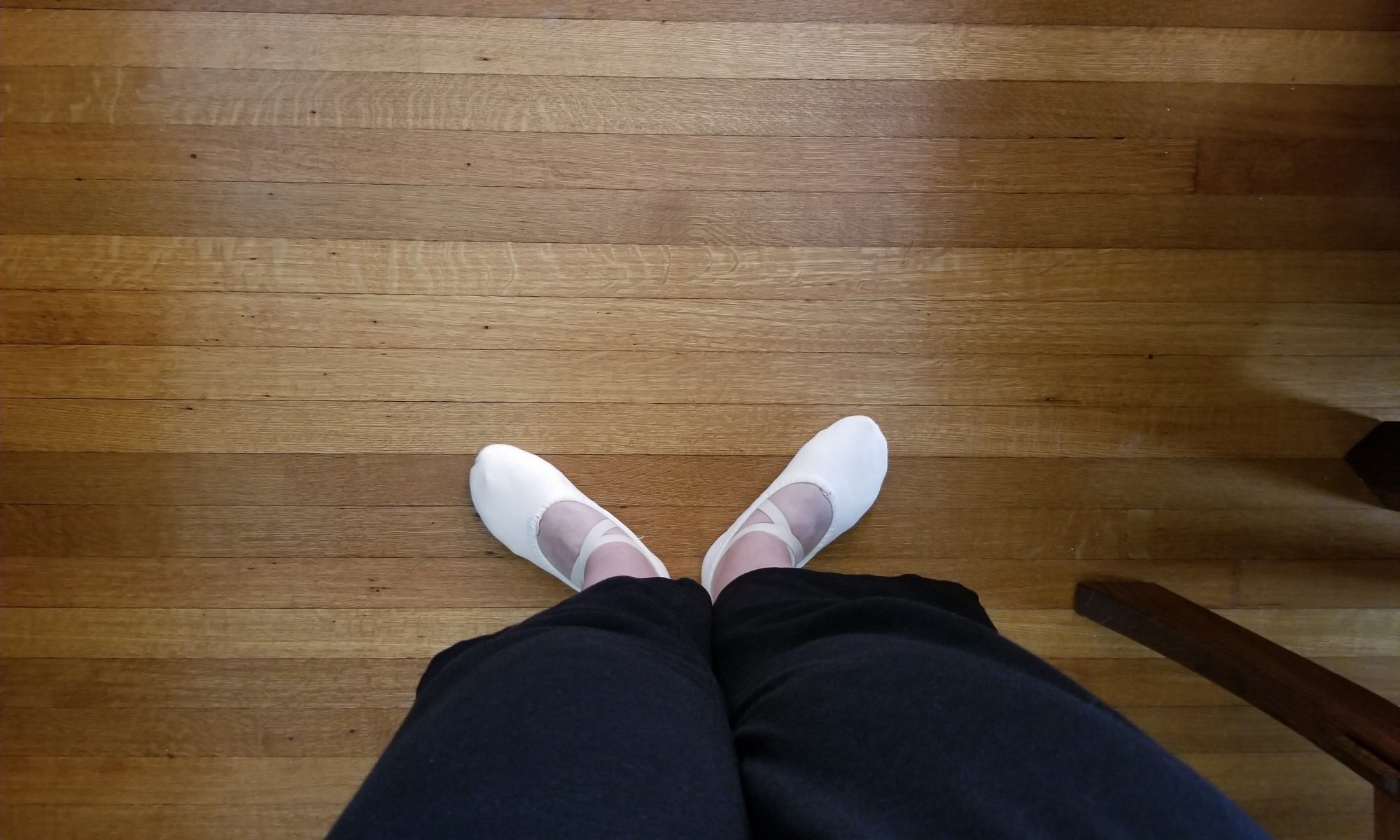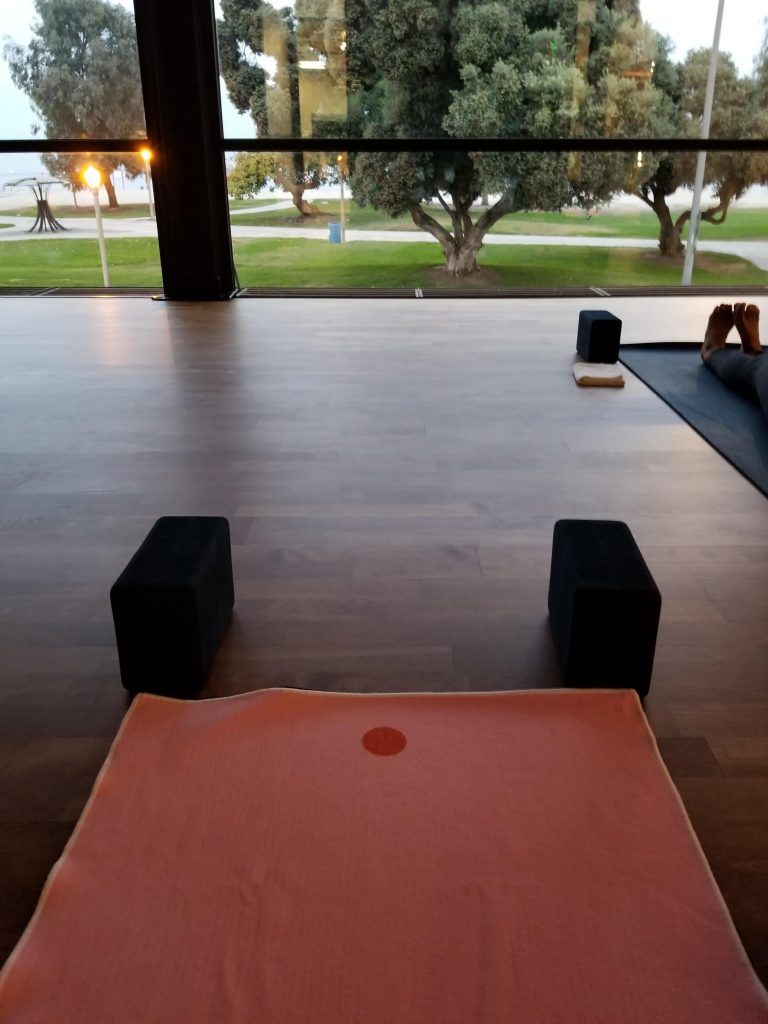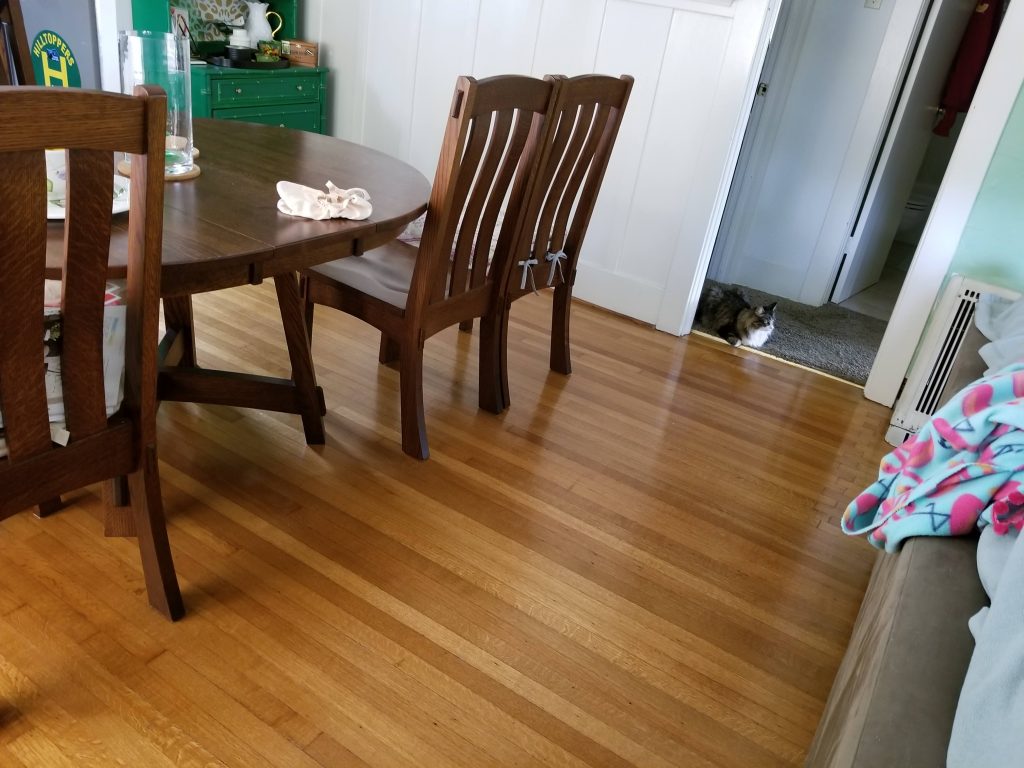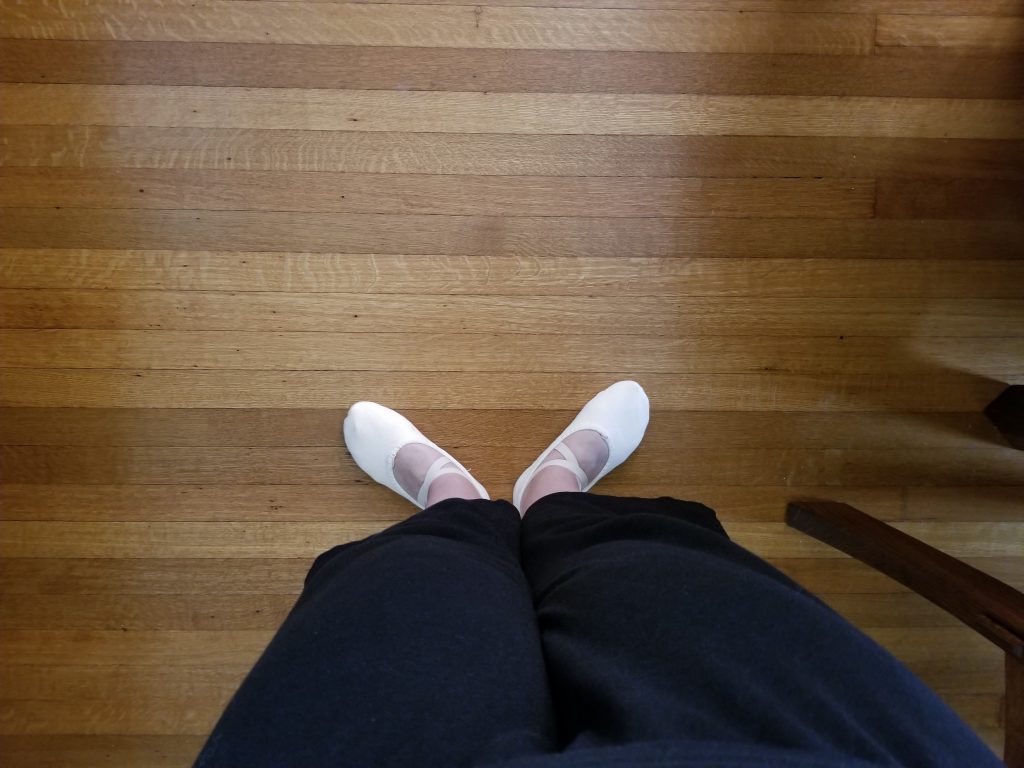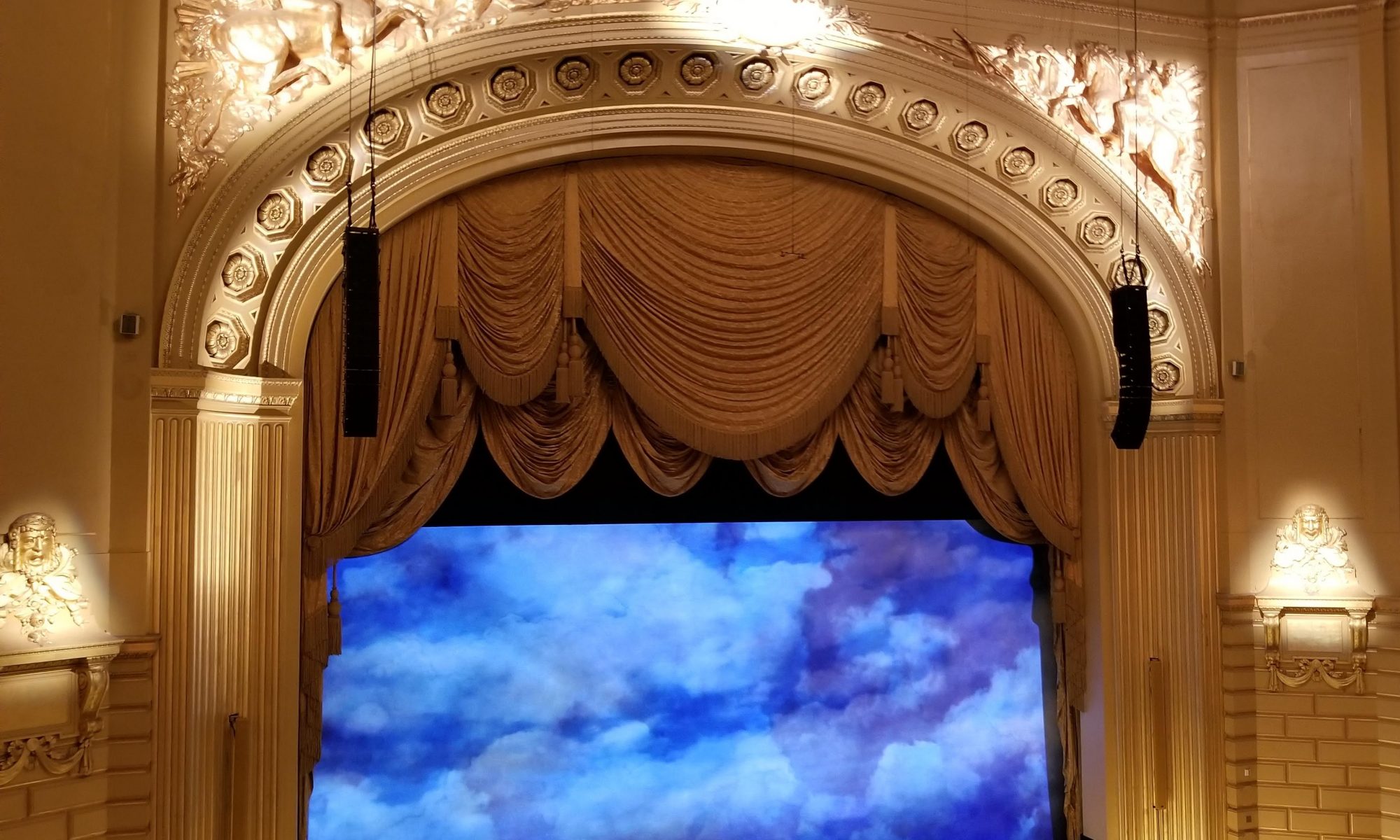Symphony #9 – Alexei Ratmansky, 2014
Wooden Dimes – Danielle Rowe, World Premiere
Swimmer – Yuri Possokhov, 2015
Program 3 of the SF Ballet’s 2021 season was subtitled, A Journey Through 20th Century Music, History, and Literature. An ambitious title for a program of three abstract story ballets, but hey – they were connected by themes rooted in 20th century culture. It is perhaps a tenuous string to tie these works together with, but at least the pieces did seem to compliment rather than detract from each other.
Symphony #9 – Alexei Ratmansky, 2014
Symphony #9 is one of the pieces from Ratmansky’s Shostakovich Trilogy which we saw in 2019. It is about the communist state, control, surveillance, and love. The dance vocabulary for this piece incorporates traditional folk-dance forms into the balletic vocabulary in a highly effective way and the key characters express their roles through their own very clearly defined vocabularies, rather than simply through expression.
One couple represents the Soviet regime. Interesting steps in their particular movement vocabulary include this recurring judgmental snooping posture and the female dancer has this very literal “beating the drum” movement that she uses as a sort of rallying cry for the corps de ballet. The other main couple represent Shostakovich and his wife. There is an underlying sadness mixed with a bit of paranoia in their movement vocabulary.
Then there is a male soloist in an undefined role. In his entrance, he is figuratively waving the flag (for the regime?) and uses his charisma to gather all of the dancers around him (including the Shostakoviches). I was very intrigued by the way that his motives remained vague throughout.
Though the intensity of the tension between the Shostakovich couple and the Soviet regime builds throughout the piece, there is never really a resolution. I suppose as T.S. Elliot would say, “This is the way the world ends, not with a bang, but a whimper.”
Wooden Dimes – Danielle Rowe, World Premiere
Since this was a premiere, it was presented as a dance film, but unlike COLORFORMS, it was filmed on stage rather than in the world. The way that it was filmed made me think of a 1940’s musical number although at a certain point the interesting, swirling camera angles detract from rather than enhance the movement.
This ballet has a 1920’s vaudeville vibe. The story itself is an old trope: it starts with a happy, young couple, she gets seduced by stardom, he gets seduced by jealousy, they break up, then try to come back together, but in the end they both wind up alone and miserable.
Even though the story isn’t original, there are certain elements in the way the choreographer tells the story that I found really insightful and interesting. There are two sets of characters in the ballet – Betty’s Shiny Things (her joy and happiness) and Robert’s Dark Angels (his doubts and insecurities), that are portrayed by dancers. I really like the way that these ineffable ideas are embodied and interact with the characters.
Swimmer – Yuri Possokhov, 2015
Swimmer is loosely based on a short story called The Swimmer by John Cheever that was published in 1964. This ballet was an archival performance capture, but the set and staging, particularly the use of projection, translate well to viewing via monitor.
There is an overarching mid-mod style to the work, including scenes that evoke Mad Men and a Frankie and Annette movie pool party. The ballet is comprised of ten vignettes, most of them centering around the main character, but there are some sort-of random interludes, such a section titled Lolita. The scenes in which the lead character is “swimming” are some of the most effective thanks to the way that the projections are used to convey his transition from being on land to being in/under water as well as the movement vocabulary.
Overall, Program 3 was fine, it just didn’t knock my socks off like Mark Morris’s Sandpaper Ballet did. I am looking forward to Program 4 (Balanchine’s Jewels) which starts streaming tomorrow (April 1).

